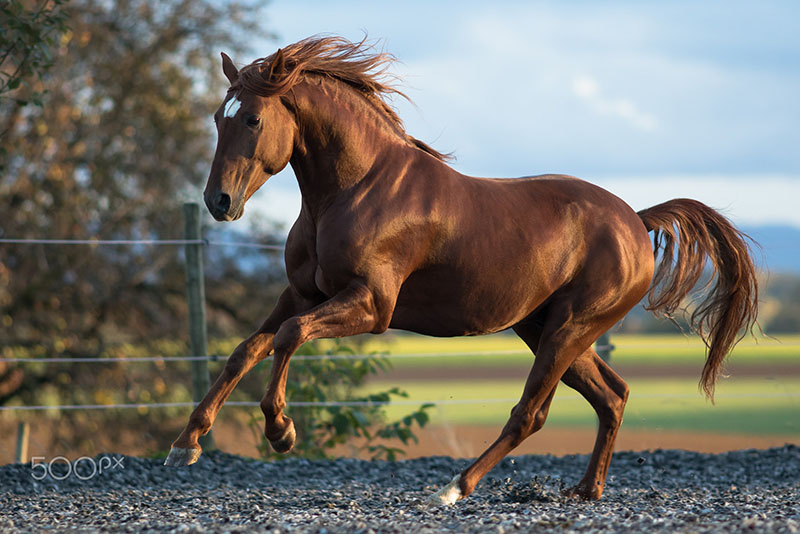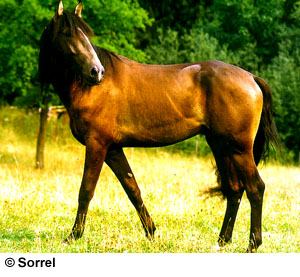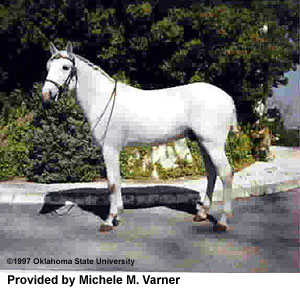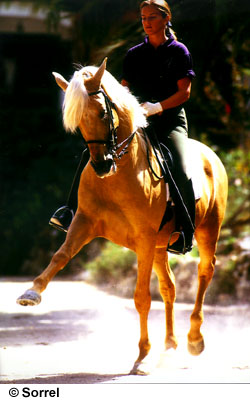Lusitano Horses
Also Known As: Lusitanian, Betico-lusitano, National, Peninsular, Portuguese
The Lusitano is found in Portugal. These horses are very similar in conformation to the Andalusian horses of Spain. The two breed are thought to have originated from a common source but selection in the Lusitano has resulted in a more convex profile reminiscent of the old Andalusian or Iberian horse whereas the Andalusian as developed a more Oriental head shape.
Since setting up their own Stud Book, the Portuguese have been able to make great strides in monitoring and improving the breeding program. Having been sought after over the centuries as a war horse, the same genetic abilities enable the Lusitano to be the perfect horse for mounted bullfighting in Portugal. In Portugal the bulls are not killed in the bullring so the horse must be very agile and still remain calm.
Lusitano horses are generally between 15.1 - 15.3 h.h but there are some that make over 16 h.h. Often gray or bay, they may be any true color, including dun and chestnut.
Their most recognizable characteristics include:
- a long noble head, most typically with a convex profile, narrowing to a finely curved nose
- large generous eyes, inclined to be almond shaped
- a powerful arched neck with a narrow hairline, deep at the base and set at a slightly wide angle to the shoulder, giving the impression of being fairly upright
- a high wither leading smoothly from the neck to the back
- a short-coupled body with powerful shoulders, a deep rib cage and broad powerful loins
- a gently sloping croup with the tail set rather low and an unobtrusive hip
- fine clean legs with excellent dense bone- the hind leg positioned well underneath the body axis, producing the hock action so suited to collection and impulsion
- agile elevated movement coupled with a smooth and comfortable ride
- an abundant, silky mane and tail
References
Sarah Beaumont
Hendricks, Bonnie L., International Encyclopedia of Horse Breeds, Univ of Oklahoma Press, 1995.
Mason, I.L. 1996. A World Dictionary of Livestock Breeds, Types and Varieties. Fourth Edition. C.A.B International. 273 pp.




